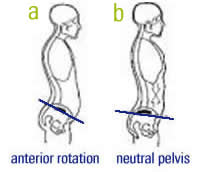An athlete walks in wanting to become stronger and more explosive. A program starts forming in your head to load up the posterior chain with deadlifts along with Olympic lifts to help them get explosive. That is until you look at his assessment sheet. Red flags stand out that signal to you the coach that it is not time to Olympic lift or even deadlift from the floor. These red flags must be cleared before we can get athletes into a program that can fully unlock their potential.
The most common red flag seen is a low Active Straight Leg Raise (ASLR) score. If you know anything about the Functional Movement Screen™ (FMS™) a poor ASLR score would rule out any hinging movements such as deadlifts and the olympic lifts. Now you’re thinking, “What on earth am I going to do with this kid?!” Do not worry there is a way to design a program for this scenario that gets an athlete performing deadlifts and olympic lifts in no time.
This can be done by finding ways to attack the weak points typical of a low ASLR score within every exercise possible. A low ASLR usually means an athlete does not have stability over the anterior core. This is very relatable to anterior pelvic tilt (APT). Anterior  pelvic tilt will decrease stability in the core by placing the hamstrings on stretch, the abs on stretch and the spinal erectors constantly tonic. This position compromises the natural stability that the core has in neutral position.
pelvic tilt will decrease stability in the core by placing the hamstrings on stretch, the abs on stretch and the spinal erectors constantly tonic. This position compromises the natural stability that the core has in neutral position.
GET ON THE FLOOR
I have found that getting an athlete supine whenever possible helps give them an internal feeling of what it feels like to properly brace the core because of the proprioceptive feedback. The floor acts like the training wheels on a bike. By being on the back the athlete will have a physical cue as to whether or not their core is properly braced. If the athlete is not properly braced, they will have immediate feedback proprioceptively because they will not feel the floor flush against their back.
I like turning toward floor presses, deadbugs and wall press abs to get an athlete on the floor. Each of these exercises gives immediate feedback to the athlete as to whether the core is braced properly or not. As a coach you will look for daylight under the low back and flaring of the ribs. A simple cue to tell the athlete would be to feel the entire back against the ground or ribs down toward the pelvis.
BUILD THE GLUTES
Another problem associated with a low ASLR score is having weak glutes. An athlete with weak glutes will really struggle to properly extend the hips. Now if you are following the rules set forth by the FMStm, deadlift variations are out of the equation with a low ASLR score. Supine bridges or glute bridges are a simple way to work around this rule.
Supine bridges fall outside of the rule because of the nature of the exercise. Instead of only two points of contact, the supine bridge has multiple contact points. These multiple contact points make the hinge movement easier and the supine position allows the athlete to continue learning what a it feels like to properly brace the core.
PUTTING IT ALL TOGETHER
Here would be an example of balanced program to help an athlete get off on the right foot toward their long-term goal:
Day 1
1) Goblet Squat 3×10
2A) DB Floor Press 3×10
2B) TRX Row 3×10
3A) DB Step-up 3x10ea
3B) Deadbug 3x10ea
3C) SL Supine Bridge 3x10ea
Day 2
1) Barbell Supine Bridge 3×10
2A) DB Chest Supported Row 3×10
2B) ½ Kneeling SA Cable Press 3x10ea
3A) Split Squat 3x10ea
3B) Wall Press Abs 3×10
3C) Carry Variation 3x40yds
Train the athlete with these concepts in mind for 4 to 8 weeks and in no time they will be deadlifting and Olympic lifting their way to being a better athlete.